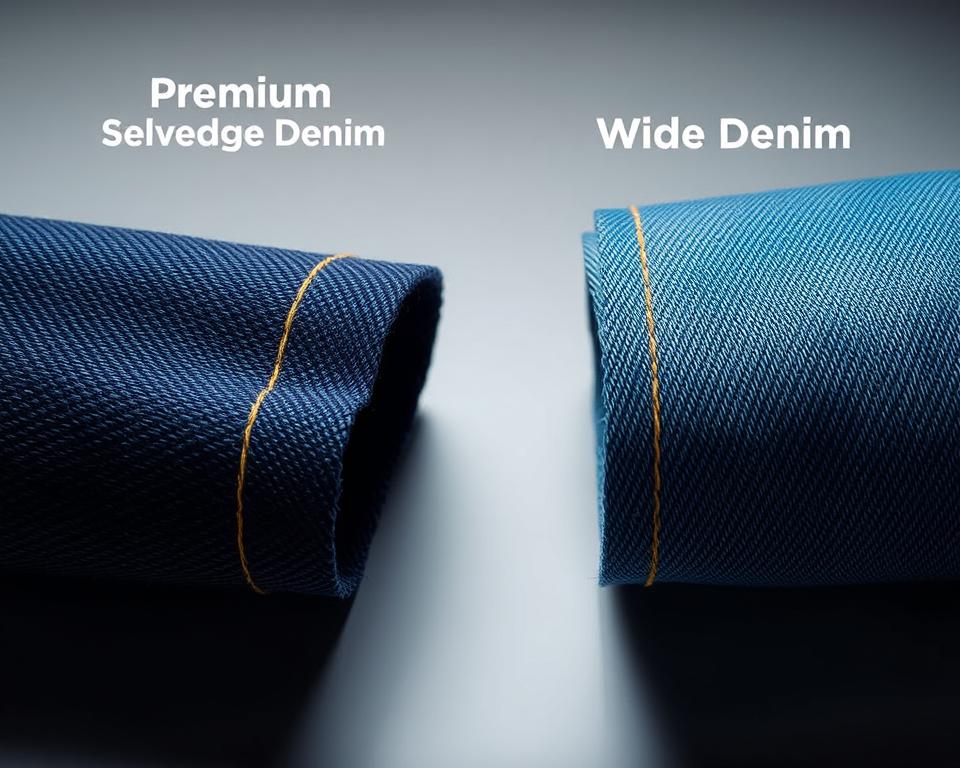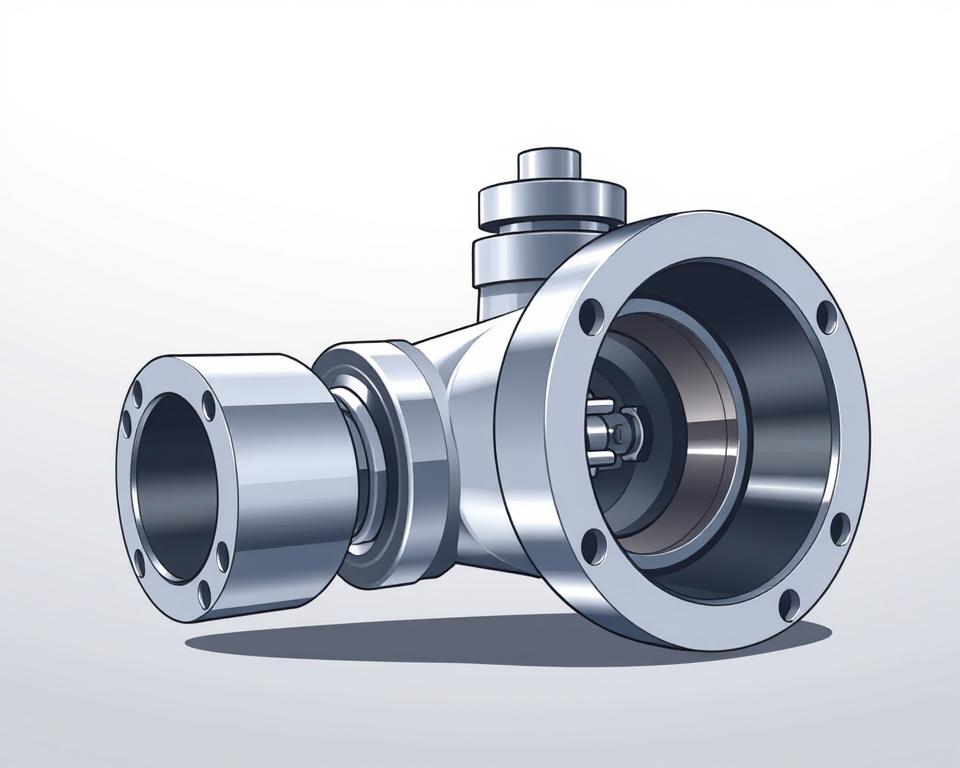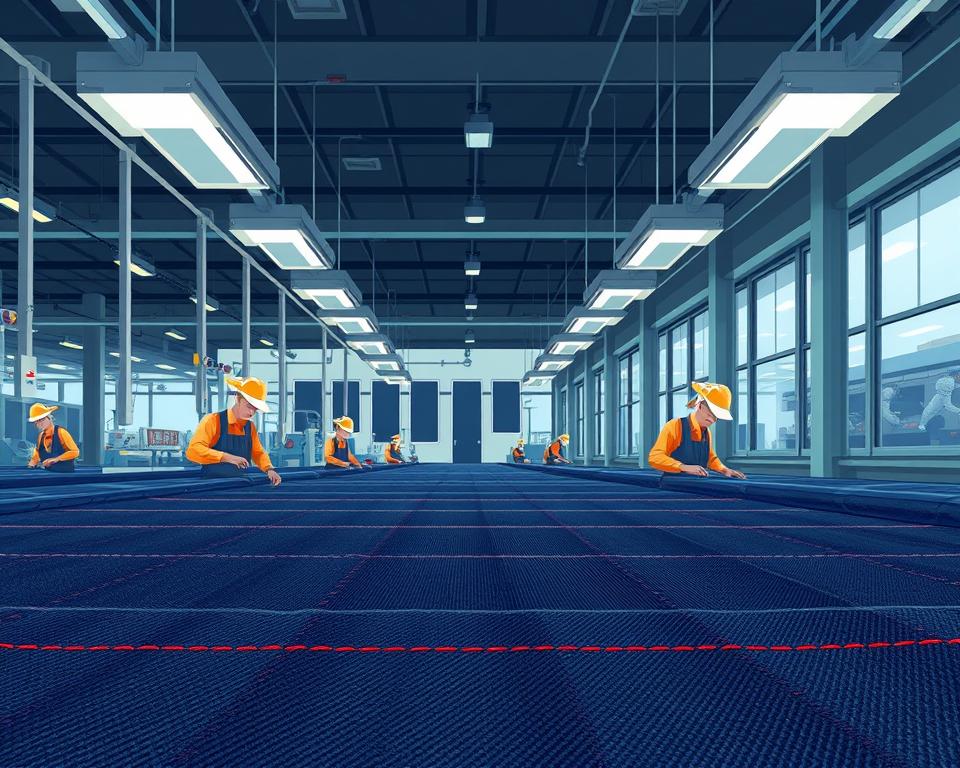A Comprehensive Handbook for High-Quality denim Selvedge Textile
Ever wondered the reason some jeans seem like they’re built for endurance eternity? The secret lies in the elements and artistry. Consider the growing popularity of high-end selvedge. This goes beyond common material—it’s a testament to superiority and heritage.
Currently, more people are turning to these timeless materials for their durability and traditional selvedge denim by the yard allure. Be it that you are a do-it-yourself sewist or a denim aficionado, there’s something special about employing superior cotton and thread. It goes beyond merely creating pants; it’s about producing something that tells a story.
Within Core Fabrics, we’ve assembled a collection of 14.25oz certified organic cotton and stretch options. These materials are tailor-made for a spectrum ranging from raw jeans to designer jacket designs. Ready to explore the world of exceptional fabrics? Let’s dive in.
Defining Denim Selvedge Fabric?
Why do particular jeans set themselves apart with their unique, finished without extra steps borders? The key is found in the selvedge denim, a superior fabric renowned for its robustness and retro appeal. Unlike regular textiles, this fabric is fashioned using time-honored methods that have endured through ages.
What Selvedge Denim Means
Selvedge denim is manufactured using old-style shuttle looms, which produce narrow widths of about 30-35 inches. These looms weave the fabric in a manner that ensures self-finished borders, often marked by a distinctive red line. This method confirms the fabric is densely interlaced and exceptionally sturdy.
Contemporary looms, in contrast, produce wider fabric but do not offer the equivalent of craftsmanship. The imperfections in selvedge, like misaligned seams or inconsistent patterns, are accepted as part of its charm. This ideology, known as “wabi-sabi”, honors the appeal of organic flaws.
How Selvedge Denim Is Made
The manufacturing of selvedge denim involves a meticulous process. Shuttle looms cross the horizontal threads back and forth, resulting in a compact and robust fabric. This process stands in contrast with new-age looms, which emphasize speed and efficiency over quality.
Companies such as Karson Denim uphold vintage Japanese craft practices from the 1990s. They deliberately incorporate flaws to preserve the authenticity of the fabric. All products is evaluated on a four-point system, ensuring it meets the highest standards of excellence.
| Feature | Selvedge Denim | Contemporary Denim |
|---|---|---|
| Span | 30-35 inches | 60+ inches |
| Weaving Process | Classic Shuttle Loom | Modern Loom |
| Surface | Non-uniform, Raw | Uniform |
| Strength | Superior | Moderate |
“The allure of selvedge lies in its imperfections—each irregularity speaks of artistry and heritage.”
The Background of Selvedge Denim
From humble beginnings to international fame, the story of these textiles is vibrant and moving. Originally developed as hardwearing clothing in 17th-century France evolved into a signifier of classic elegance and artistry.
Origins in Traditional Weaving
The roots of this material reaches back to Nîmes, France, where it was referred to as “serge de Nîmes.” Originally designed for the working class, it was constructed with robust cotton and thread. Its strength ensured its popularity among workers during the Gold Rush.
In the 20th century, it had become a staple for pants. The shuttering of the Cone Mills White Oak facility marked a turning point. This shift paved the way for Japanese artisans to revive old-world weaving methods.

Advancements in Production
Following WWII, Japan adopted retro American culture. Skilled workers revitalized antique looms to manufacture true reproductions. This devotion to artistry guaranteed the continuance of selvedge as a niche product.
In modern times, advancements from Italy and Turkey have brought forth sustainable blends and elastic selections. These improvements have enhanced the allure of this timeless textile. At Core Fabrics, we procure internationally, from Montréal to Asia, to bring you the top-notch quality.
“The legacy of selvedge is a tribute to the lasting worth of excellence and heritage.”
Reasons to Select Selvedge Denim?
Why does selvedge denim stand out in the universe of superior materials? Its special characteristics and incomparable robustness have made it beloved among lovers and creatives alike. Be it that you are crafting trousers or a tailored jacket, this material offers a fusion of heritage and updated style.
Unique Qualities of Selvedge Fabric
Selvedge denim is known for its firm interlacing, which improves durability and wear patterns. Unlike standard materials, selvedge denim material is fashioned using classic shuttle looms, yielding a tightly packed and more durable fabric. In doing so, it secures that every item possesses a unique texture and personality.
Here’s what makes it special:
- Hairy, rigid raw denim offers a contrast to laundered, relaxed stretch options.
- Sanforization stabilizes the fabric for consistent measurements, while natural variants entail a unique shrinkage journey.
- Available weights span from 9.5oz Eco Finish to 14.25oz Organic, meeting different needs.
Durability and Longevity
One of the key attributes of selvedge denim is its enduring nature. The firm interlacing both reinforces strength and permits distinctive color fades over time. This establishes it as a wise purchase for those in pursuit of timeless pieces.
Main considerations:
- Mid-weight fabrics from 12oz to 14oz work well for tailored jackets and evolving jeans.
- Opt for the 14.25oz True Indigo for traditional jean lifespan.
- Sustainable variants such as recycled cotton combined with indigo blends enhance eco-friendliness.
Core Fabrics offers an assortment of products tailored for every requirement. Whether untreated or sanforized, every item is made to provide outstanding quality and performance.
Selvedge vs. Wide Denim: A Comparison
When it comes to crafting robust and fashionable apparel, the choice of material plays a crucial role. Two common choices include selvedge and wide denim, each with unique characteristics. Understanding their differences can help you choose the right one for your endeavor.
Key Differences in Weaving Techniques
Selvedge denim is produced using traditional shuttle looms, resulting in slim widths of 30-35 inches. This herringbone denim material method creates firm borders, often accented with a signature red line. Wide denim, on the other hand, uses modern projectile looms, resulting in spans of 60+ inches.
Old-style shuttle looms yield roughly 3m per minute, while contemporary projectile looms achieve up to 30m per minute. The variance in production speed affects both the expense and the finish of the final product.
Advantages and Disadvantages
Selvedge denim is known for its premium quality and durability. Its narrow width renders it perfect for projects where exposed edges or decorative patches are required. However, it can be more expensive, typically around $23 per meter.
Wide denim is budget-friendly, priced around $8 per half-meter. Its wider width cuts down on scrap, ideal for large projects like upholstery. However, it lacks the unique edge finish of selvedge.
| Attribute | Selvedge Denim | Wide Denim |
|---|---|---|
| Width | 30-35 inches | 60+ inches |
| Method | Shuttle Loom | Projectile Loom |
| Output | 3m/min | 30m/min |
| Cost | $23/meter | $8/half-meter |
For defined borders as seen in Grainline Thayer jackets, selvedge is favored. For larger projects, wide denim offers better value and efficiency. Consider your project needs to make the best decision.
Working with Selvedge Denim
Crafting with high-end textiles raises your projects to a new standard. Whether you are creating jeans, blazers, or skirts, understanding the basics of yardage, sewing techniques, and care ensures a professional finish. Let’s explore how to make the most of this everlasting fabric.
Fabric Quantities for Your Projects
When planning your project, calculating the right amount of material is crucial. Men’s jeans typically require roughly 3-3.3 yards, factoring in flaws and potential shrinkage. For trucker jackets, expect to use around 3.3 yards, while skirts can be made with just 2 yards.
Creative pattern placement can help manage imperfections in the material. Rather than avoiding imperfections, incorporate them into your pattern for distinctive style.
| Item | Fabric Needed |
|---|---|
| Jeans for Men | 3-3.3 yards |
| Trucker-Style Jacket | 3.3 yards |
| Skirt Item | 2 yards |
Advice for Sewing and Longevity
The correct gear and skills secure a refined outcome. Opt for #70-110 pins and presser foot attachments suitable for thick fabrics. Gütermann rPET thread works well for contrasting stitches.
Here are some additional tips:
- Use a tailor’s clapper for sharp creases without shine.
- Core Fabrics provides denim kits with topstitch thread, rivets, and 9mm buttons for that expert touch.
- For structured edges, like those in jackets, selvedge is the preferred choice.
Correct care ensures your garments last longer. Wash sparingly and air dry to maintain the material’s integrity. Adhering to these practices will sustain your creations for years.
To Conclude
Crafting with premium materials isn’t just about durability—it’s about creating something with character. Selvedge denim epitomizes this ideology, fusing craftsman allure with long-lasting quality. From jeans to tailored jackets, every stitch of this material conveys a narrative.
With Core Fabrics, unleashing your creative potential is effortless. Our swatch service lets you touch and test the fabric before deciding. Furthermore, take advantage of free shipping for orders above $150 USD in North America.
Looking ahead, eco-friendly blends and vintage washes are shaping the future of cotton textiles. Such innovations provide novel methods for infusing eco-consciousness and fashion into your closet.
Ready to dive into the world of premium materials? Shop now and discover the value of crafting with purpose. Your next project could be a timeless piece that lasts for years to come.


